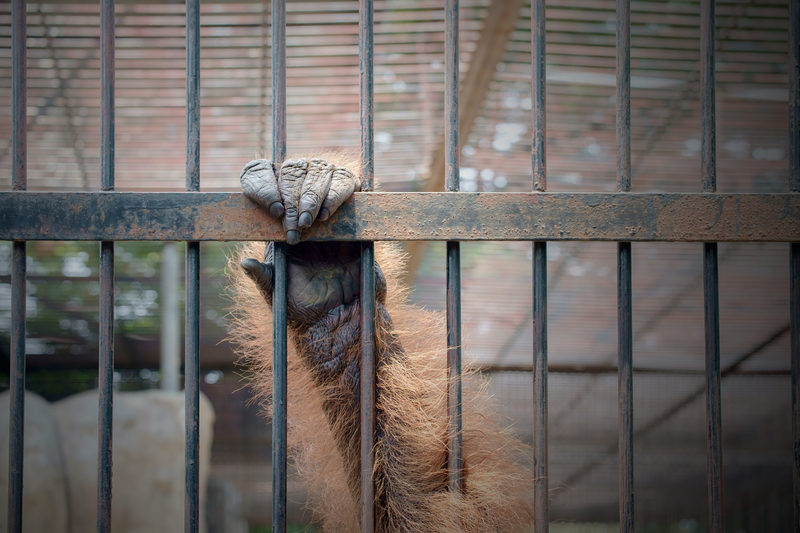More Than Just Tidying Up: A Deep Dive into Clutter Removal and Hoarder Cleansing
In a world where our possessions often outnumber our space, the concepts of clutter removal and hoarder cleansing are more relevant than ever. While many see these tasks as mere cleaning, they involve far more than organizing drawers or discarding old items. True decluttering transforms physical spaces and positively impacts mental well-being, relationships, and overall quality of life. This comprehensive guide explores not only what it means to clear out clutter but also delves deeply into the process of hoarder house cleaning--an endeavor that requires compassion, expertise, and understanding.
Understanding Clutter: More Than Mess
Clutter is more than just a messy room or a stack of old newspapers. It's the accumulation of items we no longer need, use, or value. Modern living, constant consumerism, and sentimental attachments make letting go challenging. However, recognizing the significance of decluttering is the first step to a cleaner and more harmonious life.
Types of Clutter
- Physical Clutter: Excess items in our living space such as clothes, kitchenware, magazines, toys, electronics, and paper.
- Digital Clutter: Email overload, unused files, and photos that overwhelm devices and productivity.
- Mental Clutter: Constant thoughts, unresolved tasks, and stressors taking up mental space.
- Emotional Clutter: Sentimental objects that tie us to the past or negative emotions.

Why Decluttering Matters: Benefits Beyond Aesthetics
The act of clutter removal goes well beyond tidying up visible spaces. When you remove unnecessary items and clean out hoarder spaces, you unleash a multitude of benefits:
- Improved Wellness: A clean environment reduces anxiety and stress, promoting a sense of calm and order.
- Increased Productivity: Less visual noise helps you focus and accomplish tasks efficiently.
- Safer Spaces: Clutter-free homes minimize fire hazards, falls, mold, and pest infestations, especially important in hoarder homes.
- Greater Happiness and Satisfaction: Living in an organized space fosters a sense of pride and contentment.
- Enhanced Relationships: Shared tidy environments reduce tension between family members and promote better social interactions.
Clutter Removal vs. Hoarder Cleansing: Understanding the Difference
Clutter removal is often a planned, manageable process, while hoarder cleansing presents unique challenges. To effectively address both, it's crucial to understand how they differ.
Clutter Removal Basics
- Tackling general excess stuff in homes, offices, garages, or sheds.
- Usually performed by homeowners or professional organizers.
- Involves sorting, discarding, organizing, and cleaning.
What is Hoarder Cleansing?
- Hoarder cleansing addresses extreme accumulation in homes where possessions block pathways, cover furniture, and even cause health hazards.
- Often requires specialized services involving trauma-informed cleaning, biohazard removal, and restoration.
- Involves collaboration with psychologists or social workers since hoarding disorder is classified as a mental health condition.
The Psychology Behind Clutter and Hoarding
Why do so many people struggle with clutter, and why is hoarding such a challenging issue? The answers are rooted in our emotions, memories, and even biology.
How Clutter Affects the Mind
- Decision Fatigue: Every item on display is a visual "choice" your brain processes, leading to overwhelm.
- Emotional Attachments: Objects often represent memories or accomplishments, making them hard to discard.
- Fear of Scarcity: Some hold onto items "just in case," stemming from past experiences of deprivation.
Hoarding Disorder Explained
- Marked by compulsive acquiring and difficulty discarding possessions, regardless of value.
- Strong emotional distress at the thought of discarding items, leading to unsafe living conditions.
- Often connected with trauma, anxiety, OCD, or other underlying mental health conditions.
The Step-by-Step Process of Effective Clutter Removal
Whether you are tackling a cluttered home or beginning hoarder cleaning, having a structured approach maximizes your success.
Step 1: Set Clear Goals
- Define specific outcomes (e.g., clear kitchen counters, create space in garage).
- Establish timelines and work in manageable zones.
Step 2: Gather Supplies
- Boxes (for Keep, Donate, Trash, Recycle)
- Gloves, face masks (especially for hoarder cleansing)
- Cleaning products and disinfectants
- Labels and markers for organizing
Step 3: The Sorting Process
- Assess each item: What purpose does it serve?
- Use the "one-touch rule": Decide immediately whether to keep, donate, or discard.
- Limit sentimental saving--store only truly meaningful mementos.
Step 4: Clean and Restore
- Deep clean areas as clutter is removed; sanitize surfaces, floors, and hidden corners.
- Repair minor damages or bring in professionals for restoration after severe hoarder cleaning.
Step 5: Organize and Maintain
- Group similar items together (clothing, books, tools, etc.).
- Label shelves, bins, and storage containers for easy access.
- Establish routines--regular clean-ups prevent relapse into disorganization.
Professional Hoarder Cleaning: Special Tools and Techniques
When spaces descend from everyday clutter into hoarder-level conditions, simple organizing won't suffice. Professional hoarder cleansing teams bring more than cleaning supplies--they bring empathy, expertise, and specialized equipment.
Unique Challenges in Hoarder House Cleaning
- Biohazard Risks: Decomposing food, spoiled trash, mold, animal waste, and infestations create dangerous environments.
- Hidden Damage: Accumulation can rot floors, cause leaks, or mask structural issues.
- Emotional Sensitivity: Homeowners may feel embarrassed, guilty, or overwhelmed.
Essential Steps in Professional Hoarder Cleansing
- Initial Assessment: Evaluate safety risks, biohazards, and plan interventions.
- Compassionate Engagement: Building trust with the homeowner throughout the cleaning process.
- Safe Sorting: Using PPE (personal protective equipment), industrial vacuums, air purifiers, and disposal services.
- Deep Cleaning: Sanitizing all surfaces and restoring the home so it's livable and healthy.
- Continuous Support: Offering aftercare and connecting clients to mental health resources if needed.
Decluttering Tips: Achieving Lasting Results
Whether you're embarking on a DIY decluttering journey or seeking professional help for hoarding, these actionable tips set you up for lasting success:
- Start small: Tackle one drawer or surface at a time to build momentum.
- Set a timer: Short, focused bursts prevent fatigue and overwhelm.
- Adopt the "one in, one out" rule: For every new item, remove an old one.
- Document progress: Before-and-after photos reinforce your achievement.
- Practice gratitude: Letting go creates space for joy and new opportunities.
Myths and Misconceptions About Hoarder Cleansing
-
Myth 1: Hoarders are just lazy or messy.
Reality: Hoarding is a complex mental health disorder, not a character flaw. -
Myth 2: You can "clean out" a hoarder's home in a day.
Reality: Hoarder cleansing is typically a gradual, supportive process. -
Myth 3: Throwing everything away solves the problem.
Reality: Addressing emotional and psychological needs is essential for lasting change. -
Myth 4: Professional help is only for the worst cases.
Reality: Professional organizers and cleaners can provide valuable strategies for any clutter level.
The Importance of Compassion and Support
Clutter removal and hoarder cleansing are deeply personal journeys. For those struggling, patience and empathy from friends, family, or professionals can make all the difference. Never shame or criticize someone battling disorganization or hoarding--instead, offer understanding and practical support.
Clutter Prevention: Building Healthy Habits
- Regular Cleanups: Weekly or monthly sessions keep clutter at bay.
- Mindful Purchasing: Think before buying--do you truly need or love the item?
- Free Up Digital Space: Delete unnecessary files and emails routinely.
- Stay Connected: Talk to others about your decluttering goals for accountability.

When to Seek Professional Help for Hoarder Cleaning
Some signs indicate it's time to reach out to professional hoarder cleansing services:
- Clutter blocks major walkways, exits, or covers appliances/furniture.
- Mold, pests, and foul odors have become significant.
- Accumulated items create fire or health hazards.
- Emotional distress or conflicts arise around cleaning or discarding possessions.
- Previous attempts to clear the space have failed or made things worse.
Conclusion: A Clean Start for Body, Mind, and Soul
Taking control of clutter and embracing the process of hoarder cleansing is not just about making things neat--it's about reclaiming your life and well-being. Whether you're tackling a small mess or embarking on a full-scale cleanup, remember that transformation requires patience, strategy, and often, support. With the right approach, you can enjoy a space that reflects peace, function, and happiness, proving that clutter removal is truly more than just tidying up.